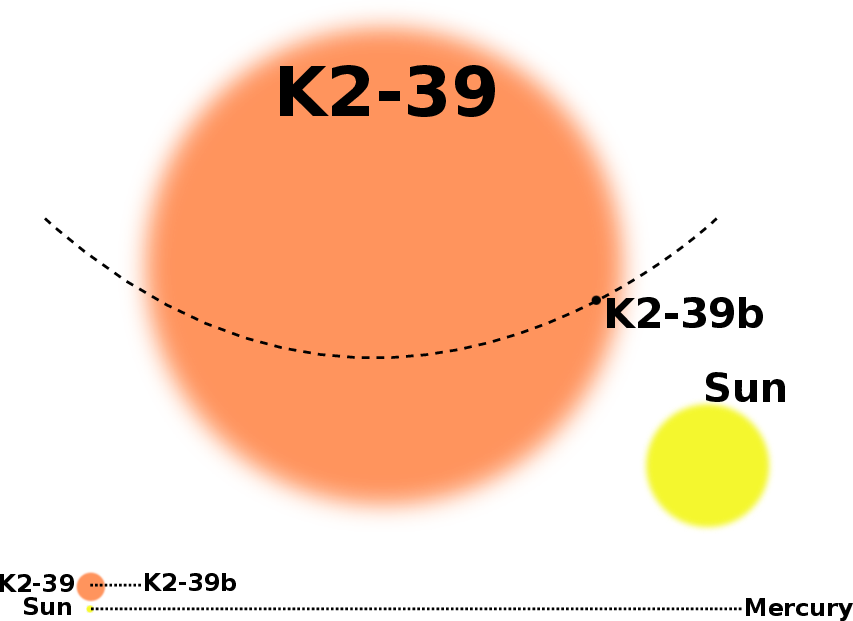Fantastic coincidence: a planet that shouldn’t be there at all
SAC scientists have discovered a new giant exoplanet orbiting a subgiant star so close that the planet ought to have been destroyed by tidal forces - but it isn't - at least not yet!

Scientists working at the Stellar Astrophysics Centre have discovered a
new giant exoplanet, which orbits a subgiant star. Such stars have
evolved to become several times larger than the Sun. Around subgiant
stars, only a few short-period planets are known, and some scientists
have speculated this may be because planets get tidally destroyed as the
star evolves and grows larger. The new planet, named K2-39b, orbits
extremely close to its host star: it orbits at a distance of only 1.7
times the diameter of the star! By comparison, the Earth is more than
100 solar diameters away from the Sun. On the other hand, the subgiant
star hosting the planet is almost four times larger than the Sun.
The planet was discovered using the NASA K2 mission which detects
planetary transits, when planets move in front of their star relative to
a distant observed. Its mass was further measured using the Nordic
Optical Telescope in La Palma, the ESO 3.6m telescope in La Silla, and
the Magellan II telescope in Las Campanas Observatory. According to
Vincent Van Eylen, who led the study, the discovery is interesting
because it shows that such close-in planets can exist around evolved
subgiant stars. "Previously, we thought perhaps such planets would
quickly be destroyed due to tidal interactions once the host star
evolves. K2-39b has not been destroyed, or at least not yet, so either
the tidal destruction is not as efficient as we may have thought or
feared, or the planet may be destroyed in the next few thousand years.
But if that's the case, it would be an extreme coincidence that we found
it in the first place, and the effects of tidal decay should become
visible within the next few years."
Further studies of planets orbiting evolved stars will help understand
the fate of planets as their host stars grow older. The same will happen
to the solar system in a few billion years, when the Sun will evolve
into a giant star.
The discovery paper is accepted for publication in the Astrophysical
Journal, but the publication date is not yet known. A pre-print can be found HERE. For more information or
questions: vincent@phys.au.dk.
